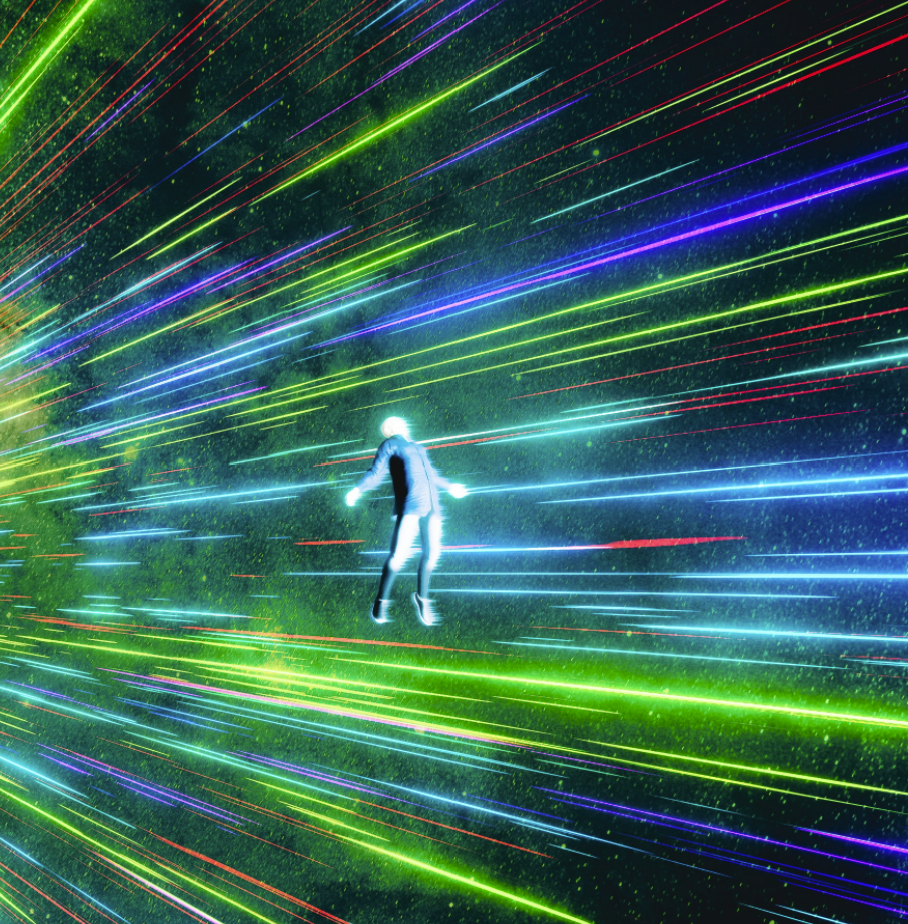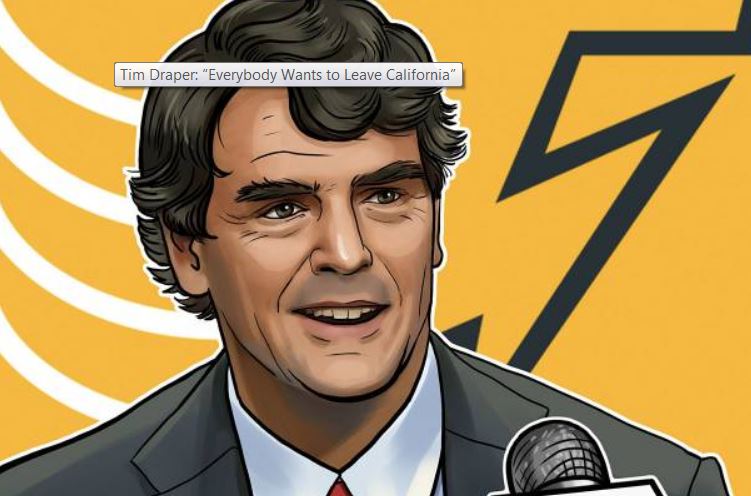The Metaverse Will Make Gamers of Us All

Fundamentally, the “metaverse” is a game – but one with real consequences and opportunities. This article is part of “Metaverse Week.”
n his seminal novel “Ready Player One,” author Ernest Cline describes a grandiose virtual reality where people spend the majority of their time, offering an escape from a reality battered by social, economic and political strife.
This is a world where digital currency is more stable than fiat and players can assume any identity they can imagine. A world that is being built today.
In a few years, we will wonder how we ever lived without the metaverse, much as we already do about the internet. Fundamentally, the metaverse consolidates the digital elements of our life – video games, social media, messaging, e-commerce – into a comprehensive experience.
Through a vast system of interconnected networks, 2D websites will become 3D web spaces that are interactive, immersive and social. Rather than scrolling through web pages, you’ll be cognizant of others engaging with the same content simultaneously as we congregate to play, shop, talk and search together.
The metaverse has an opportunity to be a more productive and socially redeeming internet. It’s also incredibly game-like, and offers real economic opportunities for developers versed with building inhabitable worlds. In other words, game developers.
The actual platform or virtual world in which communities form will take a back seat, becoming an invisible infrastructure layer, much as websites are now hosted on AWS or Google Cloud.
Instead, users will choose a metaverse platform based on ease of use, technical capabilities and quality of content. Creators that master the production of metaverse content or developers who build tools that make it easy for mainstream users to create and distribute their own metaverse content will attract the most users and therefore build the most valuable platforms.
Users will come for the content (events, shows, esports) but they will stay for the social connections fostered through shared gaming experiences.
It will allow people currently forced to hide their real identities due to cultural norms in their physical environment to flourish and showcase their individuality online. Perceived physical disabilities will no longer preclude participation and the lack of a common language won’t prevent communication.
Dismantling physical barriers will create a positive feedback loop that will propel the entire metaverse. Communities are always centers of innovation, and that will be true in our shared digital spaces. The metaverse will be self-fulfilling if it is personally fulfilling.
The metaverse will also become our primary form of procrastination, just as the internet has consumed our free moments. We will use it casually, sneaking a few moments here and there when we can, but we will also settle in for longer stretches of time when our schedule permits (or perhaps when it doesn’t, to the detriment of our real lives and obligations).
However, the metaverse may be more mundane than we are expecting to be. Rather than a sci-fi, futuristic and dystopian version of the world, the metaverse is likely to look a lot like the real world.
We know this because people who are spending time in the metaverse already (on platforms like IMVU, High Rise Second Life and Fortnite) generally buy clothing that resembles street clothes and build houses that look pretty ordinary.
While the metaverse allows for futuristic versions of reality, the human mind may prefer to live in an environment that is mostly evocative of the one it already knows best. We may all live our best lives in the metaverse, but that version may look pretty familiar to us.
Real diversity and communities
The metaverse will be equally appealing to all genders. The metaverse will transcend cultures and geographic borders. The metaverse will be a home for people who want to play games, produce music, socialize or just people watch. Because there is a place in the metaverse for everyone, it will be a locus of culture for generations to come as well as an economic engine. Big and small brands can find their way to respective audiences and enhance their digital identity.
New brands being built and that will be built in the metaverse have a unique opportunity and could one day rival and become more successful than the global brands today. The most well-known brands in the metaverse currently are Bored Ape Yacht Club, RTFKT, Genies and Zed Run, to name a few. You may be unfamiliar with some of these brands, and that speaks to our point.
The metaverse and Web 3 are ushering in a new wave of doing business. In some sense, the Web 3 community sees big, corporate brands as anathema to the crypto ethos, which values community, evangelists and profit sharing. The metaverse has its own brands that connote authenticity and quality. Many of these brands are very new, but are already truly global and have rabid, cult-like fanbases.
There’s an opportunity to do things differently. Economics should serve people rather than the other way around – the central premise of crypto.
The most valuable brands will likely be born in the metaverse and are metaverse-native, and corporations know this. Nike (NKE), for instance, acquired digital sneaker company RTFKT as part of its metaverse play. Said differently, one of the world’s most powerful brands did not enter the metaverse with its existing brand but purchased a young metaverse-native company to gain exposure to this next-gen internet.
Fundamentally a game
One thing we’re likely to all do together in the metaverse is play video games. That is the primary activity that will bring us there the first time, and then have us coming back over and over and over again.
And, in some ways, a version of this reality has already arrived. Children around the world have spent the last decade completely engulfed in the internet. They spend time in interactive environments where they play games, socialize with friends, build small businesses, and buy and sell things.
Video games, in particular, have become a primary form of socialization. This “metaverse generation” (encompassing children up to age 18 today) has very different expectations from technology – even compared to millennials.
For them, Meta’s (FB) Facebook is truly for the geriatric set. TikTok is interesting, but perhaps not interactive enough. Netflix (NFLX) is something you do when you want to spend time with your parents. YouTube’s short-form, always-on, community-developed content has replaced scheduled television programming.
Today’s youth are as addicted to technology as their parents, but consuming it in a new way.
The coming set of metaverse video games will not be after-thoughts or mini games but the main piece de resistance. Games might look entirely different.
Not all games will be first-person shooters like Fortnite or Valorant. Sometimes we will play old-school arcade games that resemble Super Mario Brothers or Pac Man. Other times we will procrastinate with more mindless pattern games like Candy Crush or build worlds like the Sims or Second Life.
The video games we play in the metaverse will be of an extremely high quality, often built by AAA gaming studios, and they will keep us coming back for more. They may also be built on the blockchain. Today, blockchain-enabled games and blockchain games are in the infancy of development – there are few titles, and blockchain infrastructure itself is still being developed.
Likewise, video game developers are likely to be the primary designers of the metaverse because at its core the metaverse is a video game. Video game developers are typically among the best and brightest graduates of computer science educational programs because video game development is highly complex; the person writing the code must think in 3D.
When a person turns a door knob in the metaverse, the door swings open. That is not just a 3D architectural model, but a world with cause and effect – and few coders outside of gaming studios know how to program that world.
These developers cannot be created rapidly in coding schools the way that HTML developers are, which means there will be a greater demand for game development talent from remote locations and emerging markets, causing a new economic opportunity for those who are crafty enough to teach themselves game development.
In some ways, the metaverse is evolving rapidly, but in other ways the rate of improvement feels almost glacial. It is important to remember that this new environment consists of robust and highly customizable video game worlds, and those take a long time to develop and test appropriately.
We are encouraged by the wave of new entrants into the field, and believe that the metaverse that we are all hoping for will evolve and ship much more quickly than previous technological innovations.










